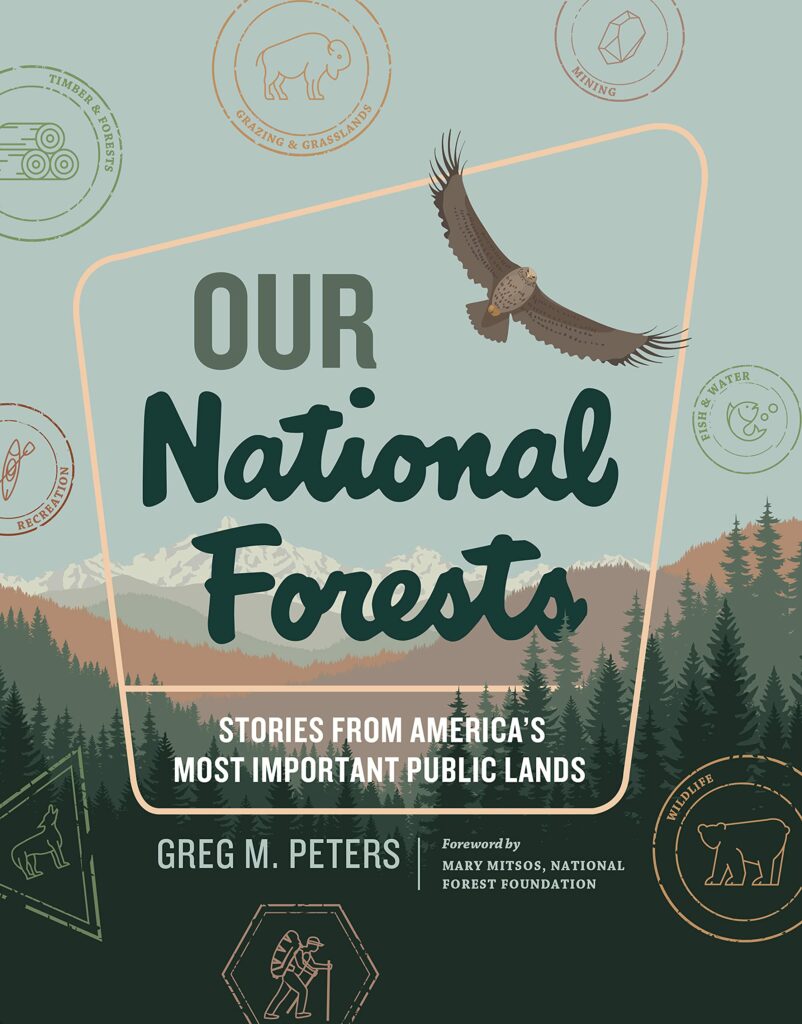
We are fortunate in Colorado to host four beautiful national parks—Rocky Mountain, Mesa Verde, Great Sand Dunes, and Black Canyon of the Gunnison—all of which receive a significant amount of admiration and use. Our state is also home to 11 national forests and two national grasslands, which may attract less name recognition, but are exquisite nonetheless.
Even those who frequently hike, ski, camp, and otherwise enjoy the outdoors may still wonder, what exactly is a national forest? Without entry fees and often little more than roadside signs stating when you enter or leave a national forest, it can be less than obvious what their significance actually is. Greg M Peters’ “Our National Forests: Stories from America’s Most Important Public Lands” (Timber Press, 2021) not only explains what they are, but also shares a well-curated selection of tales exploring these diverse spaces throughout the United States.
Peters explains, “Our national forests aren’t like our national parks—even though many forests possess inspiring views, impressive populations of wildlife, and abundant recreational opportunities that rival them. If our national parks represent preservation, our national forests represent conservation.” National forests are designated spaces that involve significant management—from midwest grasslands that are being reclaimed after the dustbowl and federal land use, to wildlife populations being tracked and studied with the help of citizen scientists, to areas continuously pulled between competing and ever-present interests such as logging and mining versus clean water and conservation. Peters explores all of this through the history of the Forest Service, stories of individual forests, and acknowledgment of those who have been pushed to the margins regarding land regulation, management, and overall access.
While some of “Our National Forests” can be dense, it is well-balanced with breathtaking color photographs of the wide array of public land we are fortunate to have throughout the U.S. In fact, at first glance this book could be mistaken for an appealing but mostly visual coffee table book, but don’t be fooled—the depth of research and personal accounts contained within are of worthwhile substance.
A big takeaway from “Our National Forests” is just how much Americans have interacted with and significantly changed the land surrounding us, and how much stewardship and involved decision making these wild spaces now require. In many cases, it is no longer a matter of simply leaving a space alone—animal and plant populations have been altered, competing interests have numerous stakes, and other consequences of past use are still present. Peters warns, “if we fail to act as agents of our lives, or of our forests, they will be managed by external forces—to our benefit or to our peril.” The environmental, social, economic, and political stakes are present throughout our public lands, and the simultaneous fragility and resiliency of these cherished spaces is fascinating from each of these perspectives.
Check out “Our National Forests” at your closest Denver Public Library location.
Hannah Evans is the senior librarian at the Smiley Branch of the Denver Public Library.

Be the first to comment